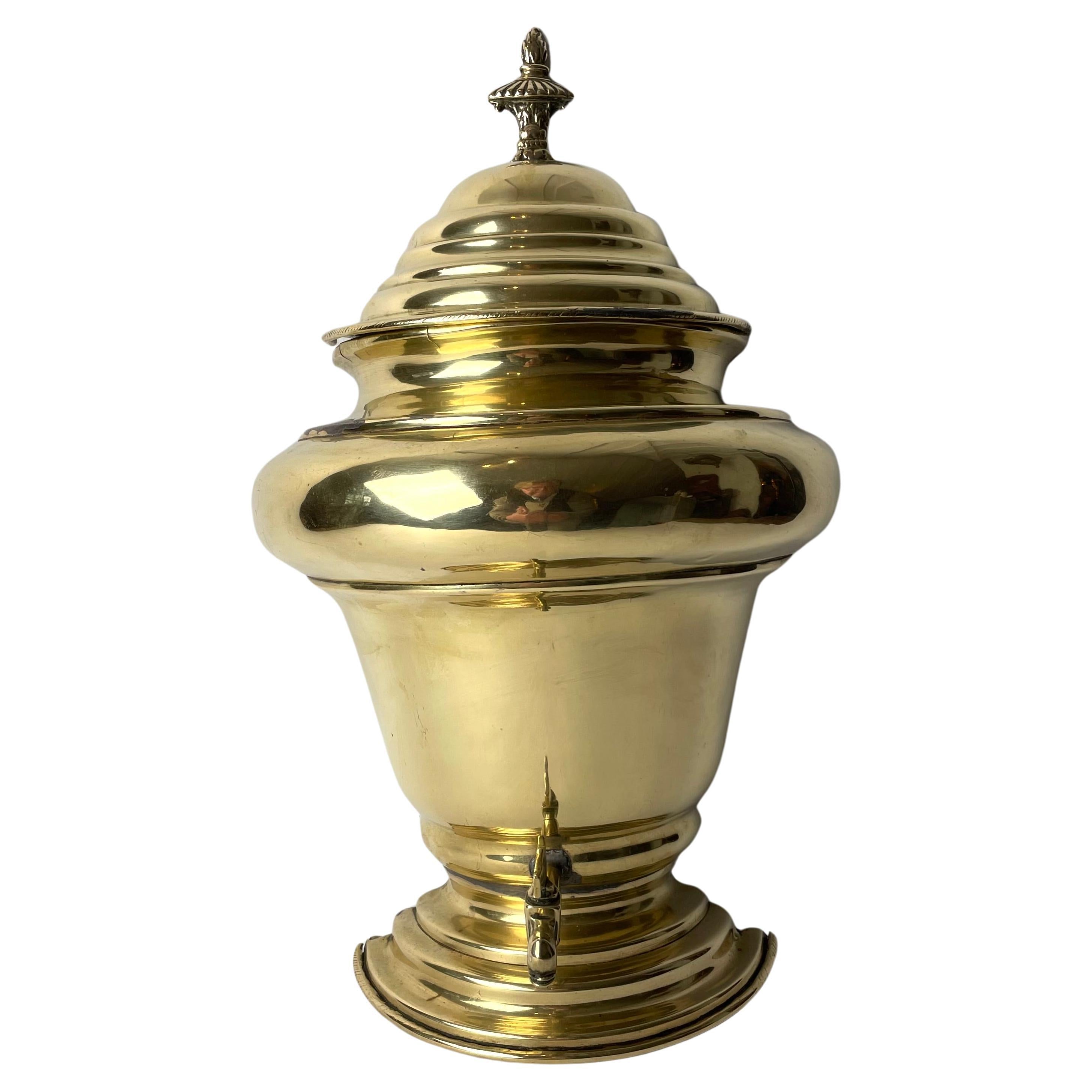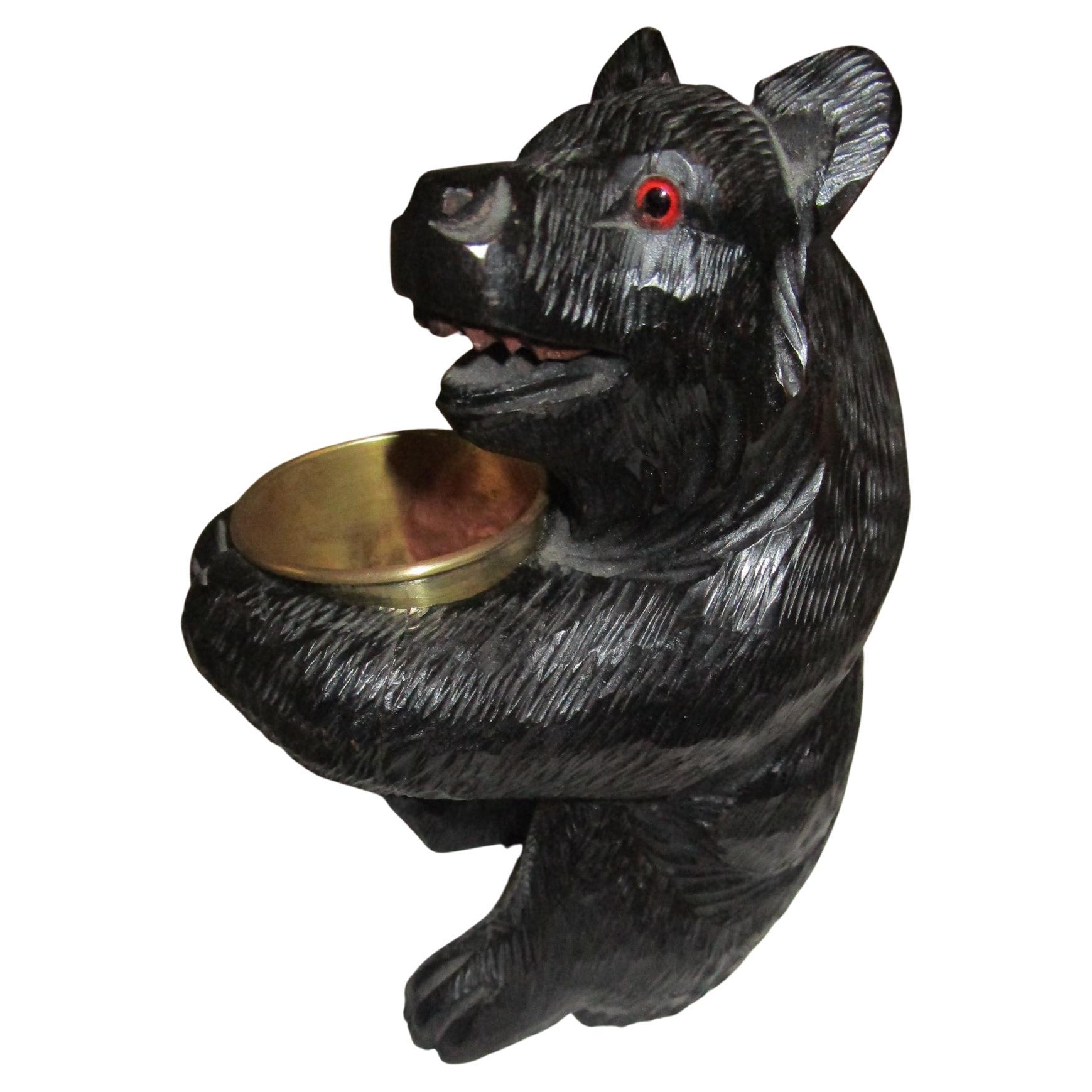Items Similar to Spoon Holder in Brass with Star Repoussé Pattern, probably early 19th Century
Want more images or videos?
Request additional images or videos from the seller
1 of 14
Spoon Holder in Brass with Star Repoussé Pattern, probably early 19th Century
About the Item
Spoon Holder in Brass with Star Repoussé Pattern, probably early 19th Century
A spoon holder (also usable for utensils more generally) in brass. Top part decorated with intricate and elegant star pattern in repoussé and chasing. The star decor is accentuated by small strips and circles where the metal has been inverted into empty space.
Wear consistent with age and use.
- Dimensions:Height: 8.27 in (21 cm)Width: 4.93 in (12.5 cm)Depth: 2.76 in (7 cm)
- Materials and Techniques:Brass,Repoussé
- Place of Origin:
- Period:
- Date of Manufacture:Early 19th Century
- Condition:Wear consistent with age and use.
- Seller Location:Knivsta, SE
- Reference Number:1stDibs: LU7571235607932
About the Seller
5.0
Platinum Seller
These expertly vetted sellers are 1stDibs' most experienced sellers and are rated highest by our customers.
Established in 1996
1stDibs seller since 2022
35 sales on 1stDibs
Typical response time: <1 hour
- ShippingRetrieving quote...Ships From: Knivsta, Sweden
- Return PolicyA return for this item may be initiated within 14 days of delivery.
More From This SellerView All
- Elegant Water Cistern with tap for wall hanging in brass from early 19th CenturyLocated in Knivsta, SEElegant Water Cistern with tap for wall hanging in brass from early 19th Century. Probably made in Italy or France. With som charming patina. Pefect as a beautiful interior detail in...Category
Antique Early 19th Century European Jars
MaterialsBrass
- Safari Canteen Bottle, Rattan, Glass and Tin, probably late 19th C/early 20th CLocated in Knivsta, SESafari Canteen Bottle, Rattan, Glass and Tin, probably late 19th C/early 20th C A charming canteen bottle or flask, inspired by the fashion and style of safari and tropical explorat...Category
Antique Late 19th Century European Bottles
MaterialsTin
- Brass Wall Utensil Holder, Empire, Early 19th C, with Roman Goddess with PuttiLocated in Knivsta, SEBrass Wall Utensil Holder, Empire, Early 19th C, with Roman Goddess with Putti This highly ornate utensil holder is made in repoussé brass. It features a scene of a Roman Goddess in...Category
Antique Early 19th Century European Empire Decorative Boxes
MaterialsBrass
- Swedish Paperweight in Marble, Early 19th CenturyLocated in Knivsta, SESwedish paperweight in the marble in the shape of a cannon barrel. Beautiful patina. Empire, early 19th century. Minor chips (se pictures) Wear con...Category
Antique Early 19th Century Swedish Empire Paperweights
MaterialsMarble
- Early 19th Century Leather Luggage with Nickel DetailsLocated in Knivsta, SEA Vintage Luggage Travel Bag in Brown Leather with Nickel Details. Early 19th Century Europe. A sleek and elegant vintage luggage bag in beautifu...Category
Antique Early 19th Century European Trunks and Luggage
MaterialsNickel
- Empire Backgammon Games Box in Mahogany with Pieces, early 19th CenturyLocated in Knivsta, SEAn Elegant Empire Backgammon Game Box in Mahogany (Swietenia Mahogani) with details in Hallmark Silver. Made in the early 19th Century. This Games Box for Backgammon is the perfect decorative piece that is also complete with pieces for playing the game! A refined Empire outside which lets the expensive materials of the piece convey the object's elegance. The interior of the box's lid forms one of the playing fields, the other being the bottom part. The backgammon board on the inside of the box is made out of intarsia wood...Category
Antique Early 19th Century European Empire Games
MaterialsSilver, Brass
You May Also Like
- Early 19th Century Brass Cooking PotLocated in Chillerton, Isle of WightEarly 19th century brass cooking pot This is a lovely looking 19th century cooking Pot, it has been used as a log bucket and works very well as such. ...Category
Antique Early 19th Century George III Urns
MaterialsBrass
- 19th Century French Brass Repousse Cachepot with Coats of Arms and LionsLocated in Dallas, TXDesigned to be displayed on a table or mantel, this brass cachepot with coat of arms and lions is from France. Hand-hammered in the 1800s, the cachepot was worked from the reverse si...Category
Antique 19th Century French Planters, Cachepots and Jardinières
MaterialsBrass
- Large 19th Century Brass Jardinière with FacesLocated in Chillerton, Isle of WightLarge 19th century brass jardinière with faces This is a good quality piece of solid brass craftsmanship, the Jardinière has a rolled rope top edge and very unusual masks, one on ...Category
Antique Mid-19th Century Napoleon III Planters, Cachepots and Jardinières
MaterialsBrass
- 19th C Black Forest Hand-Carved Swiss Brienz Bear with Brass HolderLocated in Savannah, GAThis whimsical hand carved seated wooden brown bear holds a brass cup suitable for cigarettes, matches or even a small bouquet of flowers. Very detailed carving with tiny teeth and a...Category
Antique Late 19th Century Swiss Black Forest Animal Sculptures
MaterialsWood
- Early 19th Century Cup in Egyptian Porphyry and Bronze with CupidsLocated in Paris, FRImposing cup in red, Egyptian porphyry featuring three cupids on a circular base. The patinated bronze cupids serve as the supporting stem for the wide-rimmed cup. Two of the cupids ...Category
Antique Early 19th Century French Empire Urns
MaterialsPorphyry, Bronze
- Early 19th Century Paris Porcelain UrnLocated in Vancouver, British ColumbiaA museum quality early 19th century Paris porcelain urn. The twin handled vase sits on a rectangular porcelain base (modelled as part of the vase), which is decorated on all four sides with finely painted scenes titled 'Gene de Corrinte', 'Gene de Mytilene', 'Gene de Sparte', and 'Gene de Chiu' in reference to various Greek city states. The ovoid body of the vase is richly decorated with Greek key and stylized acanthus designs over and below a large gilt framed oval cameo of Athena on one side and a similar cameo on the other side bearing an undecipherable name. The overall background colour scheme of the vase is dark red/burgundy and dark emerald green, two colours which were more commonly used by the Dagoty factory in Paris than other porcelain manufacturing firms at the time. The vase is unsigned. Note: Pierre Louis Dagoty's porcelain was characterized by the use of vivid colours and the thick application of burnished gold leaf. He borrowed from the repertoire of Neoclassical ornament but his designs also included Egyptian and Chinoiseries motifs. Dagoty's elegant ceramics won him the patronage of Empress Joséphine. At the height of production, in 1807, he employed over a hundred workers, and exported his wares to Russia. After the fall of the First French Empire in 1814, manufacture continued under the Duchesse d'Angoulême, the only surviving child of Louis XVI and Marie-Antoinette. Between 1816 and 1820, Dagoty worked in partnership with François Maurice Honoré. In 1817. Dagoty and Honoré received a commission from President James Monroe...Category
Antique 1810s French Empire Urns
MaterialsPorcelain
Recently Viewed
View AllMore Ways To Browse
Silla Porcelain
Antique Porcelain Temple Jars
Antique Hammered Copper Mugs
Apothecary Jar Huge
Cabbage Jar
Dundee Jar
Dundee Marmalade
Empoli Compote
English Porcelain Ewers Royal Crown Derby Circa 1900
Fornasetti Canisters
Gold Imari Ginger Jar
Guerin Pottery Jars
Ironstone Crock
Jean Marias On Sale
Jerry Meek
Kir Vase
Laura Pasquino Grey
Lladro Naturofantastic





